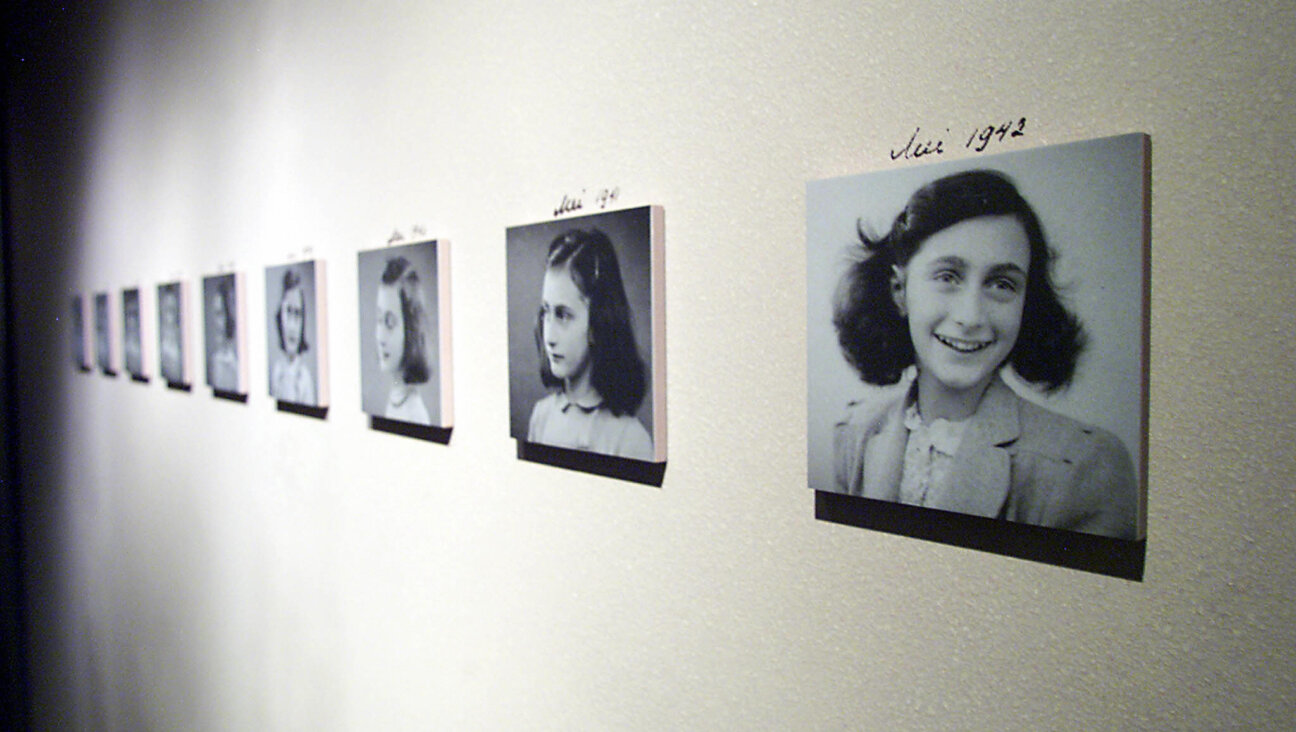A More Hospitable Sukkah City
My almost-four-year-old daughter, Bess, knows New York’s Union Square primarily as the home of an awesome new playground. She also knows that every fall, we build a sukkah on her grandparents’ deck, invite friends over, and hang out in it whenever we can. So she can perhaps be forgiven for having assumed that the spectacular constructions of Sukkah City — the collection of inventive “booths” on display in Manhattan just before Sukkot — were in fact another awesome new playground. Or, even if she was not permitted to scale the sukkah made entirely of shims, or to swing from the floral chandelier in the netting-wrapped model nearby, she can surely be forgiven for having assumed that she could at least walk through their doorways. These were, after all, sukkahs. But I, and the ropes barring the various entrances, told her no. “Why not?” Bess asked. “Well,” I fumbled, “these sukkahs, you really can’t touch or go inside. This is more like a sukkah museum.”
It was a satisfactory answer, I think. But it spoke to exactly what I found disappointing about Sukkah City. As individual constructions, the sukkahs on display were clever, elegant, even magnificent. Technically, they aimed to be kosher in their construction specs. But, in both form and function, they were not hospitable. We are commanded to dwell in our sukkot; we are expected to invite our neighbors to dwell with us. Sukkot represents pretty much the ultimate opportunity for hachnasat orchim, the welcoming of guests. Take hospitality out of the equation, and you’ve got, as the kids say, an epic sukkah fail.
To be fair, I have many caveats here: The no-entry rule, for one thing, was issued by a higher power (the New York City Department of Buildings), and was, for safety reasons, a condition for the event permit in the first place. Also, some individual sukkahs from the event did open to guests during the actual holiday.
Most important, Sukkah City as a whole does represent something rare, thrilling, even momentous: a public experience of liberal Judaism. We are accustomed, perhaps, to seeing black-hatted gentlemen on street corners inviting passersby to shake the lulav, to say nothing of giant menorahs and mitzvah mobiles. But one often wonders, where are the more liberal Jews, the American majority?
We saw them at Sukkah City. Congregants from the Reform synagogue my husband leads mingled with Conservative and Modern Orthodox visitors, a basketball team from Harlem, tourists from Japan: everyone learning and exploring and oohing and aahing together. When else does that happen? Taken as a whole, Sukkah City did welcome guests, all guests. In that way, it worked, quite beautifully, as a meta-sukkah. It was, in that regard, an epic win.
But as Sukkah City — and the liberal Jewish identity it represents — continues to evolve, perhaps some of the rules should change. The concept of hachnasat orchim should be paramount, with designers and jurors alike asked to consider, first and foremost: How does your sukkah embody hospitality? And this: Can people actually gather inside, without having to fold themselves into thirds? These sukkot would then be judged not only as super cool, boundary-pushing pieces of architecture, but also as dwellings that welcome, nourish and connect us.
Sukkah City succeeded in merging high art and liberal Jewish visibility in a teeming, vibrant public square. That is almost enough. But why not raise the content to match the form? Invite timeless Jewish values into these dazzling dwellings, and then we’ll truly glimpse the stars.
Lynn Harris is a journalist, author of the comic novel “Death By Chick Lit” and co-creator of BreakupGirl.net.
Back to Ideas on Identity
A message from our Publisher & CEO Rachel Fishman Feddersen

I hope you appreciated this article. Before you go, I’d like to ask you to please support the Forward’s award-winning, nonprofit journalism so that we can be prepared for whatever news 2025 brings.
At a time when other newsrooms are closing or cutting back, the Forward has removed its paywall and invested additional resources to report on the ground from Israel and around the U.S. on the impact of the war, rising antisemitism and polarized discourse.
Readers like you make it all possible. Support our work by becoming a Forward Member and connect with our journalism and your community.
— Rachel Fishman Feddersen, Publisher and CEO
























